- You cannot add "Lee- Enfield SMLE MK III RIFLE (UK 1907)" to the cart because the product is out of stock.
Lee- Enfield SMLE MK III RIFLE (UK 1907)
€378.00 +VAT
The SMLE Mk III* (renamed Rifle No.1 Mk III* in 1926) saw extensive service throughout the Second World War as well, especially in the North African, Italian, Pacific and Burmese theatres in the hands of British and Commonwealth forces. Australia and India retained and manufactured the SMLE Mk III* as their standard-issue rifle during the conflict, and the rifle remained in Australian military service through the Korean War, until it was replaced by the L1A1 SLR in the late 1950s. The Lithgow Small Arms Factory finally ceased production of the SMLE Mk III* in 1953.
Out of stock
CompareLee-Enfield SMLE rifle, II World War, United Kingdom
The iconic Lee–Enfield rifle, the SMLE Mk III, was introduced on 26 January 1907, along with a Pattern 1907 (P’07) sword bayonet and featured a simplified rear sight arrangement and a fixed, rather than a bolt-head-mounted sliding, charger guide. The design of the handguards and the magazine were also improved, and the chamber was adapted to fire the new Mk VII High Velocity spitzer .303 ammunition. Many early model rifles, of Magazine Lee–Enfield (MLE), Magazine Lee–Metford (MLM), and SMLE type, were upgraded to the Mk III standard. These are designated Mk IV Cond., with various asterisks denoting subtypes.
During the First World War, the SMLE Mk III was found to be too complicated to manufacture and demand was outstripping supply, so in late 1915 the Mk III* was introduced, which incorporated several changes, the most prominent of which were the deletion of the magazine cut-off mechanism, which when engaged permits the feeding and extraction of single cartridges only while keeping the cartridges in the magazine in reserve, and the long-range volley sights. The windage adjustment of the rear sight was also dispensed with, and the cocking piece was changed from a round knob to a serrated slab. Rifles with some or all of these features present are found, as the changes were implemented at different times in different factories and as stocks of existing parts were used. The magazine cut-off was reinstated after the First World War ended and not entirely dispensed with in manufacturing until 1933 and some cut-offs remained on rifles so-equipped into the 1960s.
The inability of the principal manufacturers (RSAF Enfield, The Birmingham Small Arms Company Limited and London Small Arms Co. Ltd) to meet military production demands, led to the development of the “peddled scheme”, which contracted out the production of whole rifles and rifle components to several shell companies.
The SMLE Mk III* (renamed Rifle No.1 Mk III* in 1926) saw extensive service throughout the Second World War as well, especially in the North African, Italian, Pacific and Burmese theatres in the hands of British and Commonwealth forces. Australia and India retained and manufactured the SMLE Mk III* as their standard-issue rifle during the conflict, and the rifle remained in Australian military service through the Korean War, until it was replaced by the L1A1 SLR in the late 1950s. The Lithgow Small Arms Factory finally ceased production of the SMLE Mk III* in 1953.
The Rifle Factory Ishapore at Ishapore in India produced the MkIII* in .303 British and then upgraded the manufactured strength by heat treatment of the receiver and bolt to fire 7.62×51mm NATO ammunition, the model 2A, which retained the 2000 yard rear sight as the metric conversion of distance was very close to the flatter trajectory of the new ammunition nature, then changed the rear sight to 800m with a re-designation to model 2A1. Manufactured until at least the 1980s and continues to produce a sporting rifle based on the MkIII* action.
VIDEO REVIEW
ASSEMBLY TUTORIAL
| Weight | 3.335 kg |
|---|---|
| Dimensions | 113 cm |
| Color | Black, Brown, Wood |
| Country | England |
| Material | Metal, Wood |
| with mechanism | YES |
You must be logged in to post a review.


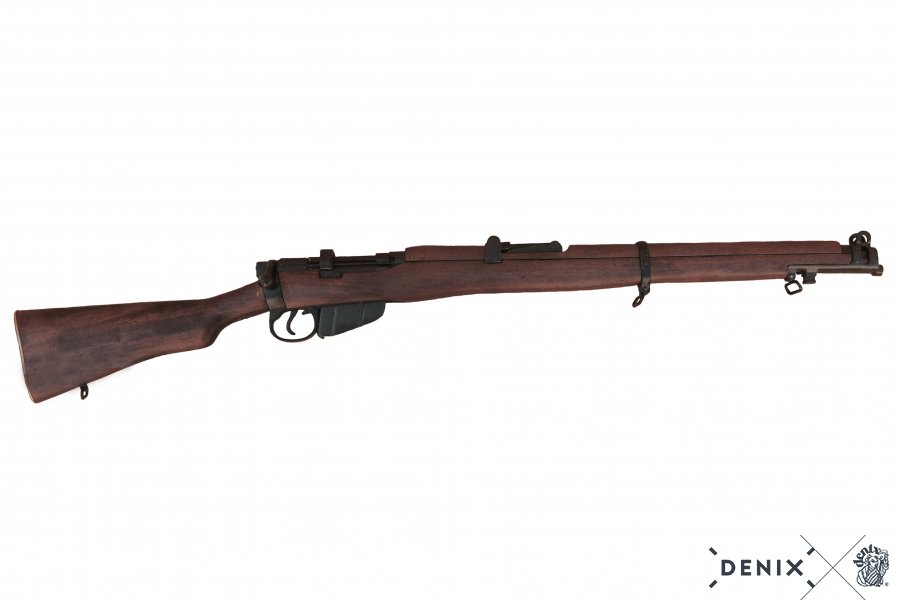
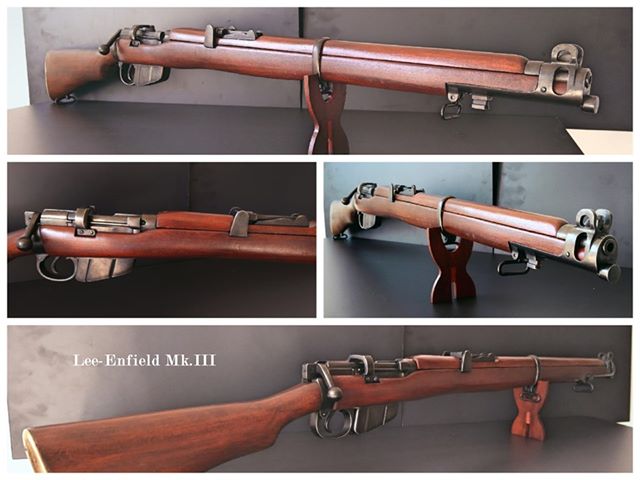
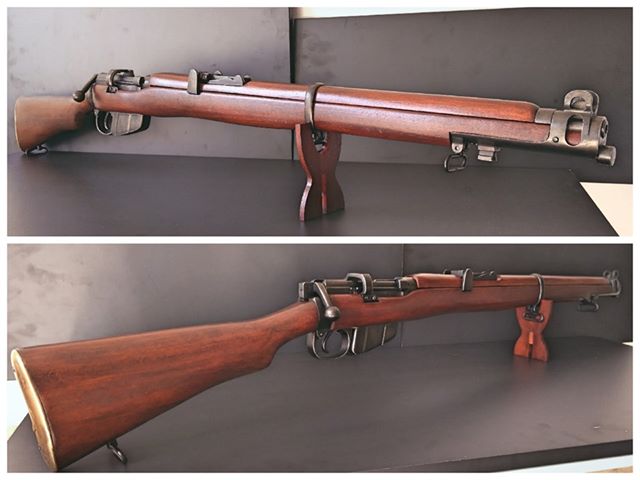
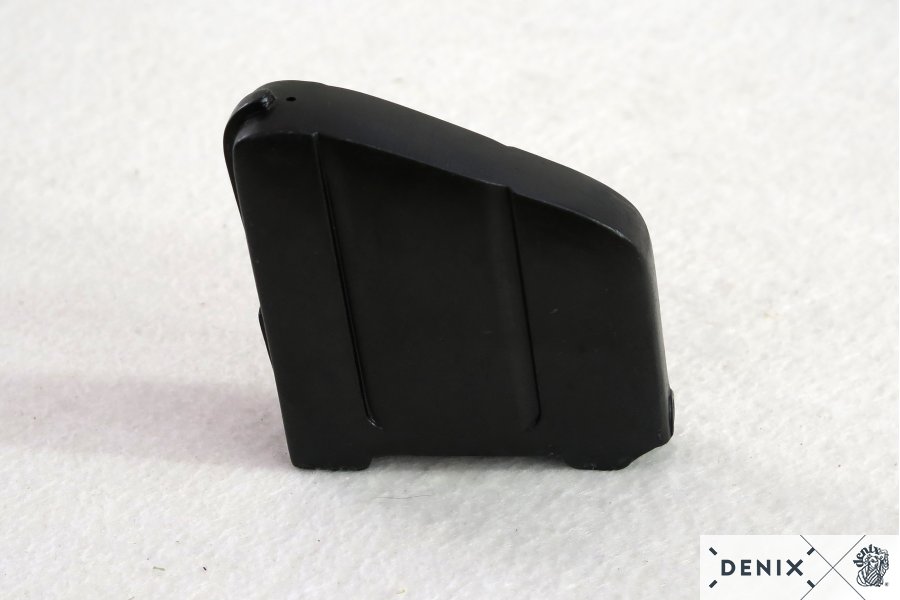
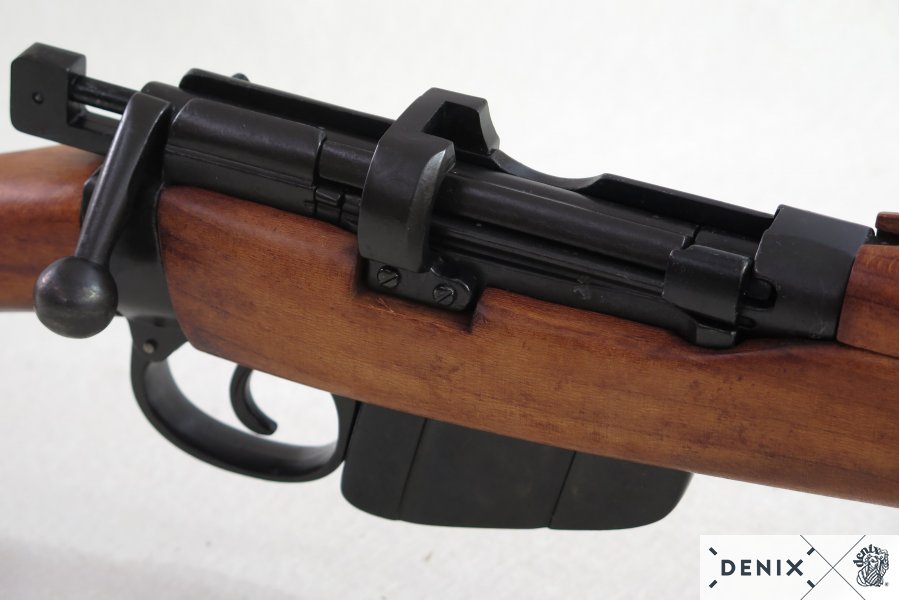
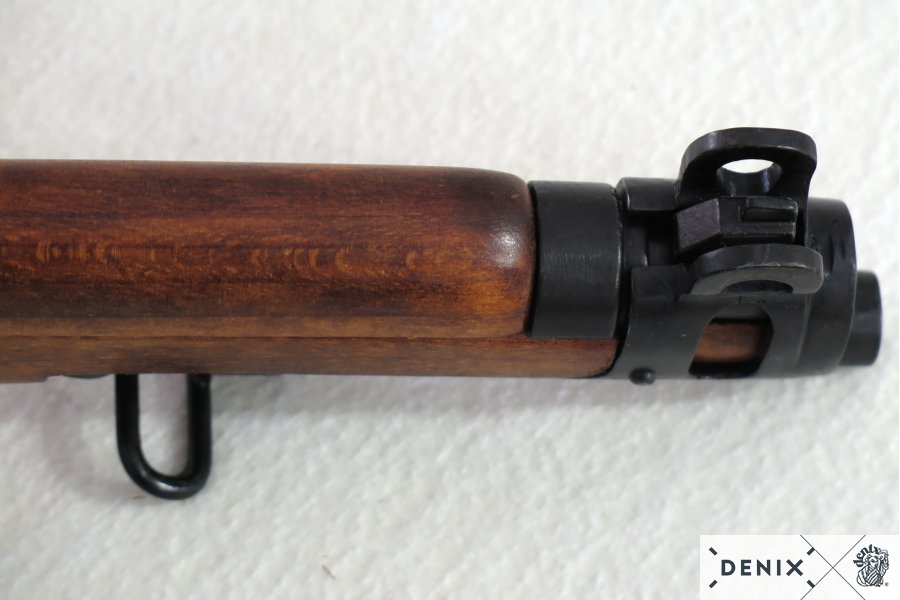
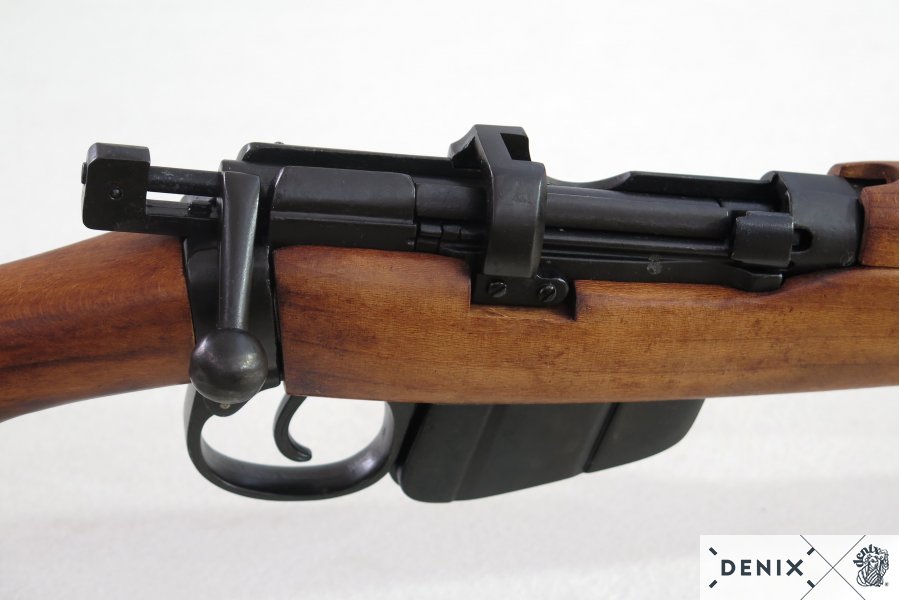
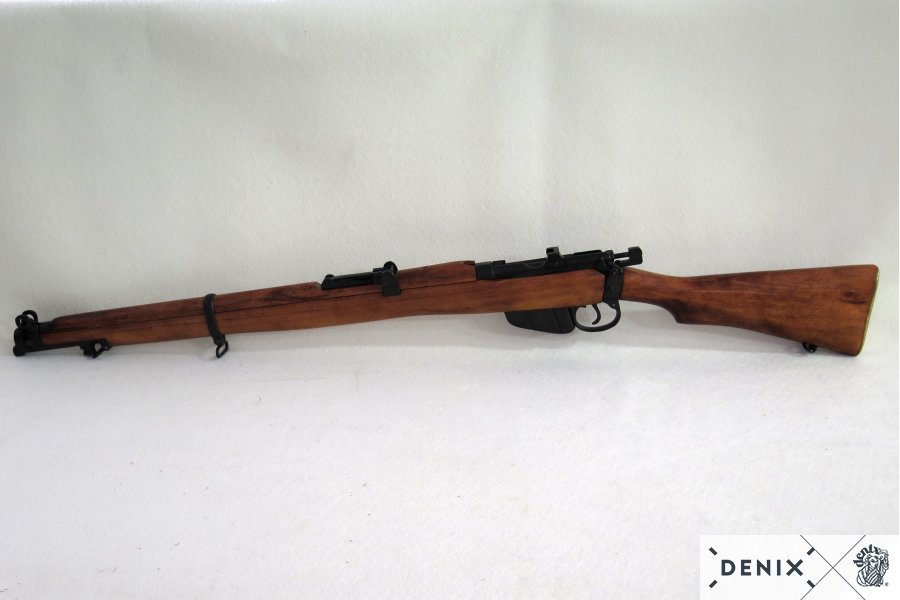
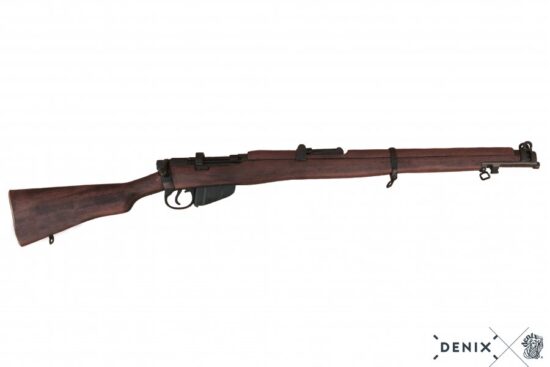
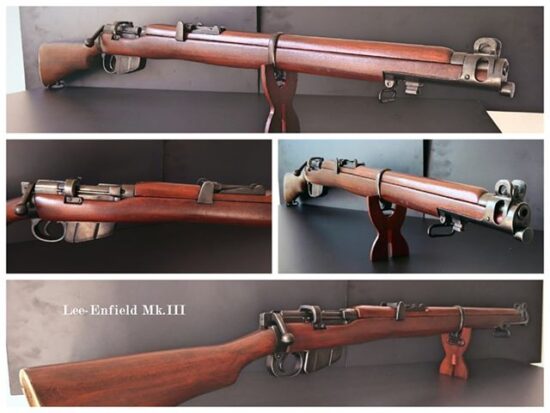
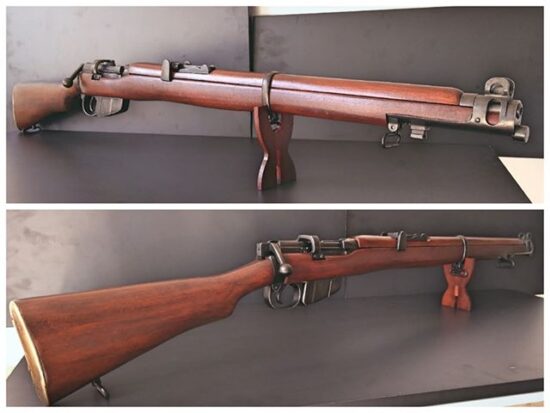
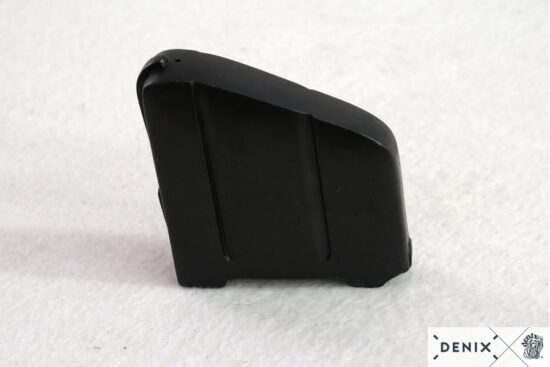
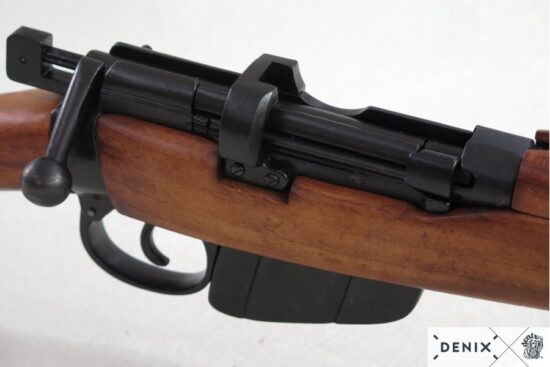
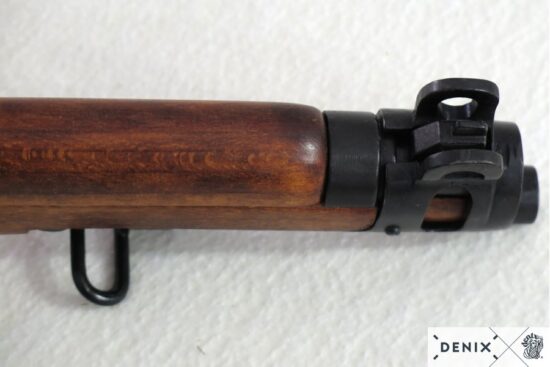
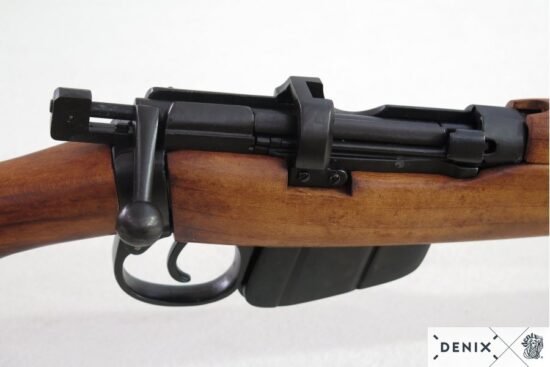
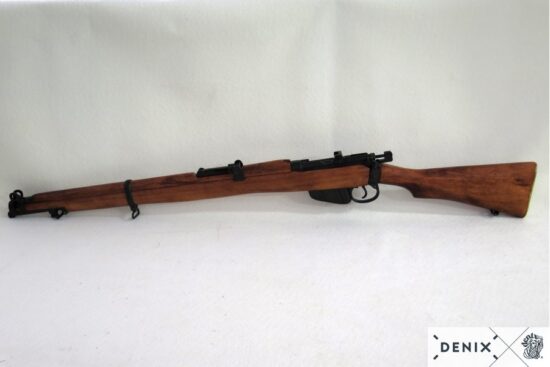


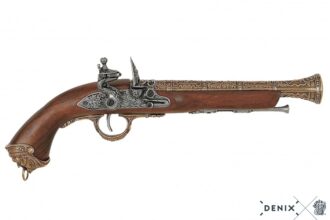

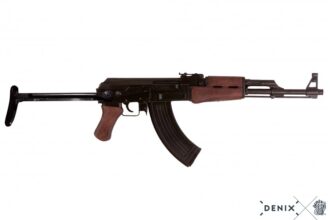



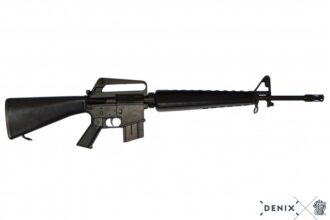
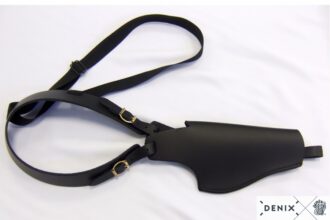

Reviews
There are no reviews yet.